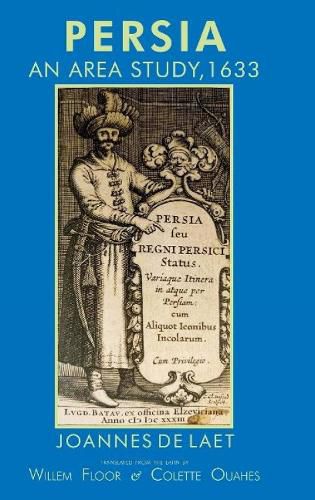Readings Newsletter
Become a Readings Member to make your shopping experience even easier.
Sign in or sign up for free!
You’re not far away from qualifying for FREE standard shipping within Australia
You’ve qualified for FREE standard shipping within Australia
The cart is loading…






This title is printed to order. This book may have been self-published. If so, we cannot guarantee the quality of the content. In the main most books will have gone through the editing process however some may not. We therefore suggest that you be aware of this before ordering this book. If in doubt check either the author or publisher’s details as we are unable to accept any returns unless they are faulty. Please contact us if you have any questions.
In the early-seventeenth century the European thirst for knowledge about other countries and cultures was growing, after all it was the Age of the Discovery. Iran was a little-known country at the time because commercial and diplomatic contacts had begun only a few decades earlier. Before 1633, when this book was written, area studies on Persia did not exist. There were some books, travelogues, or reports on wars, but none about the people, the country, the culture, or the government. To fill this gap, Joannes de Laet, a wealthy and erudite merchant and scholar, published this book in a series of country studies that included the Netherlands, France, Spain, Portugal, Italy, Poland (Livonia, Latvia, Prussia), Turkey, Mogol India, Brasil, and the New World (West-Indies). Because de Laet had never been to Persia, he used classical Greek and Roman authors, medieval sources (including from Arab authors), and account by the most recent travelers. He also used information from Nicolaas Hem, an employee of the Dutch East-Indies Company, who had lived in Persia since 1623 and had just returned to the Netherlands. De Laet also had contacts with Jacob van Gool (Golius) the famous professor of Arabic and Hebrew at the University of Leiden, from whom he received data from as yet unpublished Arabic texts. The book offers in a nutshell what was known about Persia at that time from published sources and enriched by first-hand information from Hem and Golius. This book was not only the first systematic and encyclopedic summary of all available information about Persia at the time, but it was also a well-informed one, even if most of the information was second hand. It also provided the framework for many later works about Persia.
$9.00 standard shipping within Australia
FREE standard shipping within Australia for orders over $100.00
Express & International shipping calculated at checkout
This title is printed to order. This book may have been self-published. If so, we cannot guarantee the quality of the content. In the main most books will have gone through the editing process however some may not. We therefore suggest that you be aware of this before ordering this book. If in doubt check either the author or publisher’s details as we are unable to accept any returns unless they are faulty. Please contact us if you have any questions.
In the early-seventeenth century the European thirst for knowledge about other countries and cultures was growing, after all it was the Age of the Discovery. Iran was a little-known country at the time because commercial and diplomatic contacts had begun only a few decades earlier. Before 1633, when this book was written, area studies on Persia did not exist. There were some books, travelogues, or reports on wars, but none about the people, the country, the culture, or the government. To fill this gap, Joannes de Laet, a wealthy and erudite merchant and scholar, published this book in a series of country studies that included the Netherlands, France, Spain, Portugal, Italy, Poland (Livonia, Latvia, Prussia), Turkey, Mogol India, Brasil, and the New World (West-Indies). Because de Laet had never been to Persia, he used classical Greek and Roman authors, medieval sources (including from Arab authors), and account by the most recent travelers. He also used information from Nicolaas Hem, an employee of the Dutch East-Indies Company, who had lived in Persia since 1623 and had just returned to the Netherlands. De Laet also had contacts with Jacob van Gool (Golius) the famous professor of Arabic and Hebrew at the University of Leiden, from whom he received data from as yet unpublished Arabic texts. The book offers in a nutshell what was known about Persia at that time from published sources and enriched by first-hand information from Hem and Golius. This book was not only the first systematic and encyclopedic summary of all available information about Persia at the time, but it was also a well-informed one, even if most of the information was second hand. It also provided the framework for many later works about Persia.